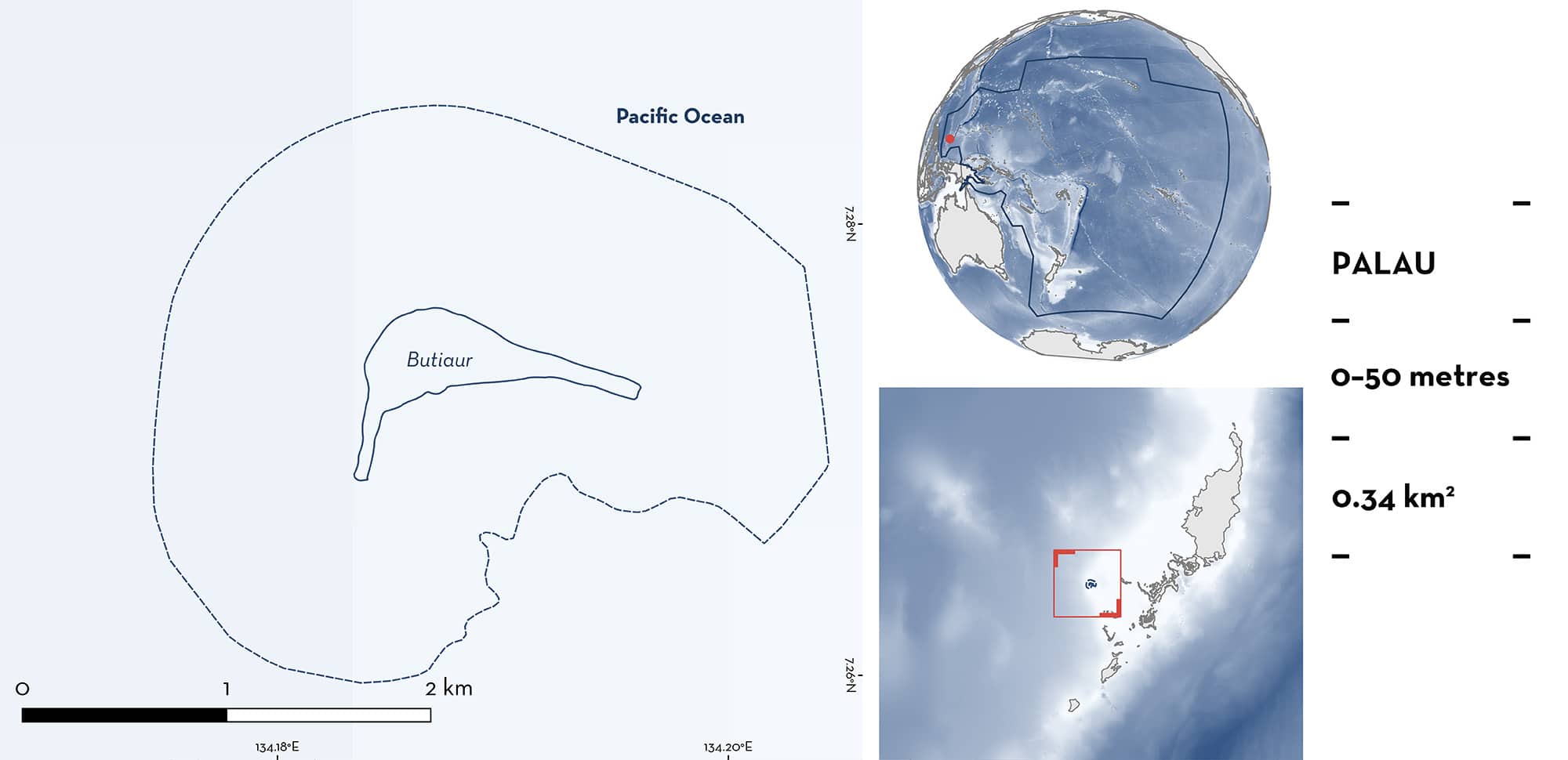ISRA FACTSHEETS
ISRA FACTSHEETS
NEW ZEALAND & PACIFIC ISLANDS REGION
Butiaur
Summary
Butiaur is located southwest of Ulong Island in Palau. This area is characterised by vertical walls, moderate slopes, and canyons. The reef runs from east to west, then curves south to create a corner with a plateau on the top covered by large patches of lettuce coral. Within this area there are: threatened species (e.g., Bull Shark Carcharhinus leucas) and feeding areas (e.g., Blacktip Shark Carcharhinus limbatus).
Download factsheet
Butiaur
DESCRIPTION OF HABITAT
Butiaur is located southwest of Ulong Island in Palau. The area encompasses the dive site locally known as ‘Shark City’ and is characterised by vertical walls, moderate slopes, and canyons. The reef runs from east to west, then curves south to create a corner with a plateau on the top covered by large patches of lettuce coral (Harel-Bornovski & Bornovski 2015). The walls and slopes drop down to 40–50 m before they merge with the sandy substrate. This site has strong and unpredictable currents (Harel-Bornovski & Bornovski 2015).
This Important Shark and Ray Area is benthic and pelagic and is delineated from surface waters (0 m) to 50 m based on the bathymetry of the area.
CRITERION A
VULNERABILITY
Two Qualifying Species considered threatened with extinction according to the IUCN Red List of Threatened Species regularly occur in the area. These are the Vulnerable Bull Shark (Rigby et al. 2021a) and Blacktip Shark (Rigby et al. 2021b).
CRITERION C
SUB-CRITERION C2 – FEEDING AREAS
Butiaur is an important feeding area for two shark species.
Between 2013–2024, assemblages of Bull Sharks (n = 2–8 individuals, average = 5) and Blacktip Sharks (n = 4–8 individuals, average = 3) are reported feeding on the Two-spot Red Snapper Lutjanus bohar spawning aggregation in the area. Observations occur during 75% of monthly dives in the area during the spawning events (J Alpert pers. obs. 2013–2024). Two-spot Red Snapper spawning events occur every month year-round a few days before the full moon around dawn (Sakaue et al. 2016). Usually, the Blacktip Sharks actively hunt the fish, while the Bull Sharks are more opportunistic. Neither shark species are seen aggregating in similar numbers in this area during the rest of the month (J Alpert pers. obs. 2013–2024).
Download factsheet
SUBMIT A REQUEST
ISRA SPATIAL LAYER REQUEST
To make a request to download the ISRA Layer in either a GIS compatible Shapefile (.shp) or Google Earth compatible Keyhole Markup Language Zipped file (.kmz) please complete the following form. We will review your request and send the download details to you. We will endeavor to send you the requested files as soon as we can. However, please note that this is not an automated process, and before requests are responded to, they undergo internal review and authorization. As such, requests normally take 5–10 working days to process.
Should you have questions about the data or process, please do not hesitate to contact us.


